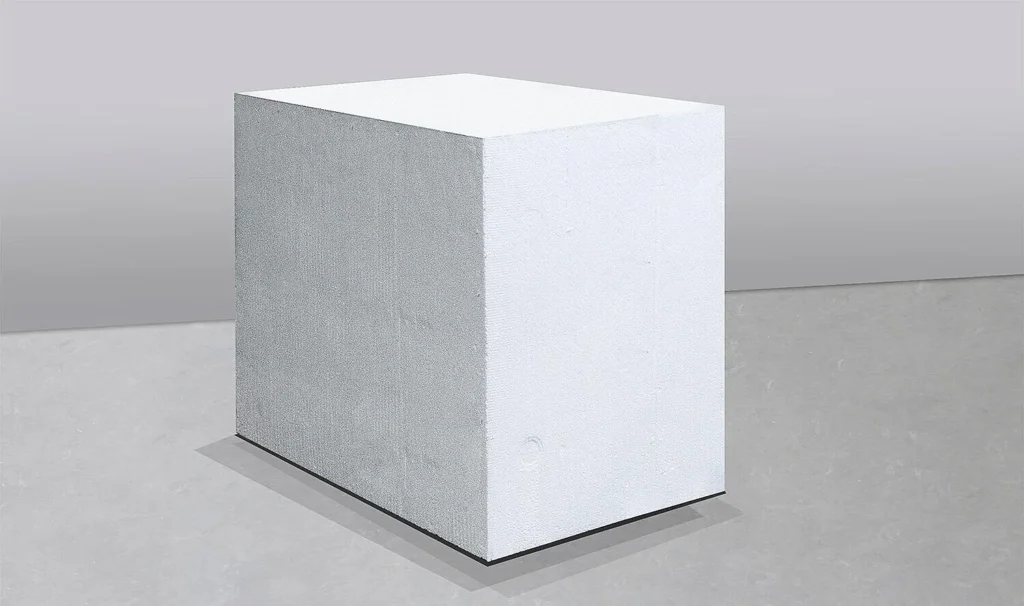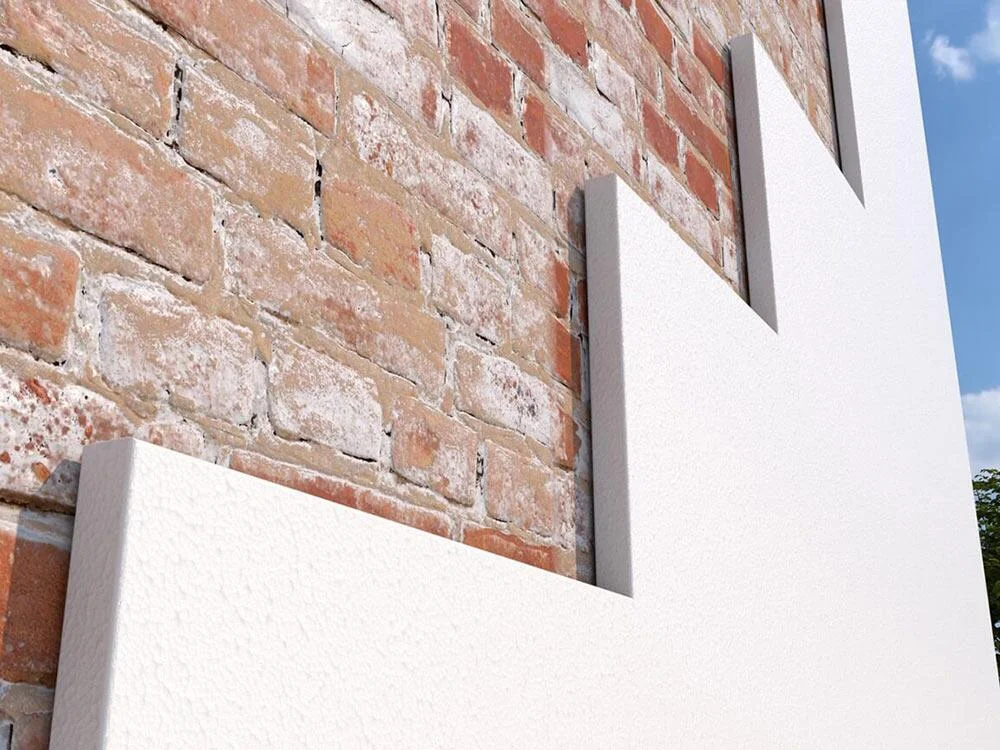Geofoam insulation has emerged as a critical component in modern construction, offering lightweight and durable solutions for a variety of structural challenges. This material, known for its exceptional thermal properties and versatility, is increasingly favored by architects, engineers, and builders. However, the diverse range of geofoam types can make selecting the right insulation a complex task.
“The Ultimate Guide to Different Types of Geofoam Insulation” aims to demystify this process by providing a comprehensive overview of the various geofoam options available. By exploring the unique characteristics, applications, and benefits of each type, this guide equips construction professionals with the knowledge to make informed decisions, ensuring optimal performance and cost-efficiency in their projects.
What Is Geofoam Insulation?

Geofoam insulation is a type of insulation material made from expanded polystyrene (EPS) foam blocks. Known for its lightweight yet durable properties, geofoam is widely used in various construction and geotechnical applications. This material is composed of closed-cell foam, which provides excellent thermal insulation, structural support, and moisture resistance.
Geofoam insulation is particularly valued for its ability to reduce loads on underlying soils, making it an ideal choice for roadways, embankments, and building foundations. Its versatility, ease of installation, and energy efficiency make geofoam insulation a popular alternative to traditional insulation methods.
Types of Geofoam Insulation
Expanded Polystyrene (EPS) Geofoam Insulation

Expanded Polystyrene (EPS) geofoam insulation is a lightweight, rigid foam material made from polystyrene beads that are expanded and fused together. Known for its excellent thermal insulation properties and high compressive strength, EPS geofoam is widely used in construction projects.
You’ll find it commonly applied in road embankments, foundation insulation, retaining wall backfill, and beneath concrete slabs. Its advantages include ease of installation, moisture resistance, and affordability. However, EPS geofoam can be susceptible to damage from prolonged exposure to UV rays and certain chemicals.
Cost-wise, EPS is one of the more economical options for geofoam insulation, offering a good balance between performance and price. When considering EPS geofoam for your project, weigh its benefits against its limitations to ensure it meets your specific needs and budget.
Extruded Polystyrene (XPS) Geofoam Insulation

Extruded Polystyrene (XPS) geofoam insulation is a rigid foam material characterized by its closed-cell structure, which provides excellent moisture resistance and superior compressive strength compared to Expanded Polystyrene (EPS) geofoam insulation. Unlike EPS, XPS offers higher thermal insulation properties and greater durability, making it ideal for use in demanding environments.
You’ll typically find XPS geofoam in applications such as foundation insulation, under concrete slabs, and as a thermal barrier in walls and roofs. The main advantages of XPS include its robustness, low water absorption, and long-term thermal performance. However, these benefits come at a higher cost than EPS.
While XPS is more expensive, its enhanced properties can justify the investment, especially for projects requiring superior performance and durability. Balancing these factors will help you decide if XPS geofoam insulation is the right choice for your construction needs.
Polyurethane Geofoam Insulation
Polyurethane geofoam insulation is a high-performance material known for its exceptional thermal properties and lightweight nature. Its low thermal conductivity makes it an excellent insulator, providing superior energy efficiency for buildings.
You’ll find polyurethane geofoam commonly used in applications such as wall and roof insulation, cavity fills, and under concrete slabs where maximum thermal performance is required. The benefits of using polyurethane geofoam include its high insulation value, ease of installation, and ability to conform to irregular shapes and spaces.
However, it also has some drawbacks, including higher costs compared to other geofoam types and potential off-gassing during installation. Pricing can be relatively steep, but the energy savings over time can offset the initial investment. Availability is generally good, with many suppliers offering various formulations to suit different project needs.
Weigh these factors to determine if polyurethane geofoam insulation is the best fit for your building insulation requirements.
Polyisocyanurate Geofoam Insulation
Polyisocyanurate geofoam insulation is known for its outstanding thermal efficiency, boasting a higher R-value per inch than many other insulation materials. This means you can achieve superior insulation with thinner layers. Compared to other foam types like EPS and XPS, polyisocyanurate offers better fire resistance and thermal stability, making it ideal for use in roofs, walls, and floors where high insulation performance is crucial.
The main advantages include its excellent insulation properties, fire resistance, and moisture resistance. However, it can be more brittle and less flexible than other foams, which may limit its use in certain applications. Cost-wise, polyisocyanurate is generally more expensive than EPS and XPS, but its higher efficiency can lead to long-term energy savings that justify the initial investment.
When choosing insulation, consider these features and costs to determine if polyisocyanurate geofoam is the right choice for your project’s specific needs.
Phenolic Foam Geofoam Insulation
Phenolic foam geofoam insulation is a high-performance material known for its excellent fire resistance and low smoke emission. With a unique closed-cell structure, it provides superior thermal insulation and moisture resistance. You’ll find phenolic foam used in construction applications such as wall and roof insulation, ductwork, and pipe insulation, where fire safety and thermal performance are paramount.
The advantages of using phenolic foam include its high R-value, exceptional fire resistance, and low smoke toxicity. However, it also has some drawbacks, such as higher brittleness compared to other foams and potentially higher costs.
Despite being more expensive, the superior fire resistance and insulation properties can make it a cost-effective choice in the long run, particularly for projects where safety and performance are critical. When selecting phenolic foam geofoam insulation, consider these factors to ensure it aligns with your project’s requirements and budget constraints.
Comparison Of Geofoam Insulation Types
When comparing geofoam insulation types for your project, it’s important to consider several key factors to ensure you select the best fit for your needs. Each type of geofoam insulation offers unique properties that can significantly impact the performance, durability, and overall cost of your project. Here’s a detailed look at the critical aspects to consider:
Thermal Resistance (R-values)
Thermal resistance, measured in R-values, is a crucial factor in selecting insulation. The higher the R-value, the better the material insulates. Polyisocyanurate geofoam stands out with the highest R-value per inch, making it highly effective for insulation purposes.

This means you can achieve excellent thermal performance with thinner layers of insulation, which can be particularly beneficial in space-constrained applications. Polyurethane also offers high R-values, providing strong thermal performance.
On the other hand, XPS (Extruded Polystyrene) and EPS (Expanded Polystyrene) offer good thermal performance, though their R-values are lower compared to Polyisocyanurate and Polyurethane. Despite the lower R-values, XPS and EPS are still reliable choices for many insulation needs.
Compressive Strength And Durability
Next, you need to evaluate the compressive strength and durability of the insulation. This is especially important for load-bearing applications where the insulation needs to support weight without deforming. XPS and Polyisocyanurate are known for their robustness and high compressive strength, making them suitable for applications such as foundation insulation, road embankments, and other heavy-duty uses.
EPS and Polyurethane, while less durable than XPS and Polyisocyanurate, still offer reliable performance for less demanding scenarios. These materials can be effectively used in applications where extreme compressive strength is not a primary concern.
Moisture Resistance And Permeability

Moisture resistance is a critical factor, particularly in environments prone to wet conditions. XPS excels in this area due to its closed-cell structure, which provides superior moisture resistance and prevents water absorption. This makes XPS an ideal choice for below-grade applications, such as basement walls and foundations, where moisture exposure is a concern.
EPS, although more permeable than XPS, remains effective in many situations and can be used in applications where direct water exposure is less of an issue. Polyisocyanurate also performs well in terms of moisture resistance and adds excellent fire resistance, making it a versatile choice for various applications, including roofing and wall insulation.
Environmental Impact And Sustainability
Considering the environmental impact and sustainability of each insulation type is increasingly important. EPS and XPS can be recycled, which is a significant advantage in reducing environmental impact. However, their production involves significant energy use, which can be a downside from a sustainability perspective.
Polyurethane and Polyisocyanurate have lower environmental footprints in terms of production, but they can be more challenging to recycle. When choosing insulation, it’s important to balance the immediate benefits with long-term environmental considerations. Opting for recyclable materials can contribute to a more sustainable construction practice.
Cost-Effectiveness
Finally, assess the cost-effectiveness of the insulation options. EPS is generally the most affordable, making it a popular choice for budget-conscious projects. Its lower cost does not significantly compromise performance, making it a practical choice for many applications. XPS is slightly more expensive but offers better moisture resistance and strength, justifying the additional cost in many scenarios.
Polyurethane and Polyisocyanurate are pricier options, but their superior insulation properties and fire resistance can justify the higher cost in applications where performance is paramount. The initial higher investment in these materials can lead to long-term savings through better energy efficiency and reduced maintenance costs.
How To Choose The Right Geofoam Insulation For Your Project?

Choosing the right geofoam insulation for your project involves careful consideration of several key factors. Start by evaluating the climate conditions of your location to determine the insulation’s thermal resistance requirements. Consider the load-bearing capacity needed for your application; Polyisocyanurate and XPS offer higher compressive strength suitable for heavy loads compared to EPS and polyurethane.
Budget constraints are crucial; EPS is generally the most cost-effective, while Polyisocyanurate and polyurethane offer better performance at a higher price point. Real-world examples and case studies can provide valuable insights. For instance, in colder climates, XPS might be preferred for its superior moisture resistance and thermal efficiency. In contrast, EPS is suitable for moderate climates where cost-effectiveness is a priority.
Expert tips recommend consulting with insulation specialists to assess specific project needs thoroughly. They may advise on the best type based on environmental factors and long-term performance goals. Additionally, considering local building codes and regulations ensures compliance and enhances project success.
By carefully weighing these factors and seeking expert advice, you can confidently select the optimal geofoam insulation type that meets your project’s requirements and ensures efficient and durable insulation solutions.
Conclusion
In conclusion, “The Ultimate Guide to Different Types of Geofoam Insulation” provides a comprehensive overview of various insulation options, including EPS, XPS, polyurethane, polyisocyanurate, and phenolic foam. By examining their properties, applications, and cost considerations, this guide equips readers to make informed decisions based on project-specific needs and priorities.
Whether prioritizing thermal efficiency, durability, or environmental impact, understanding these factors ensures optimal insulation selection for construction projects.
